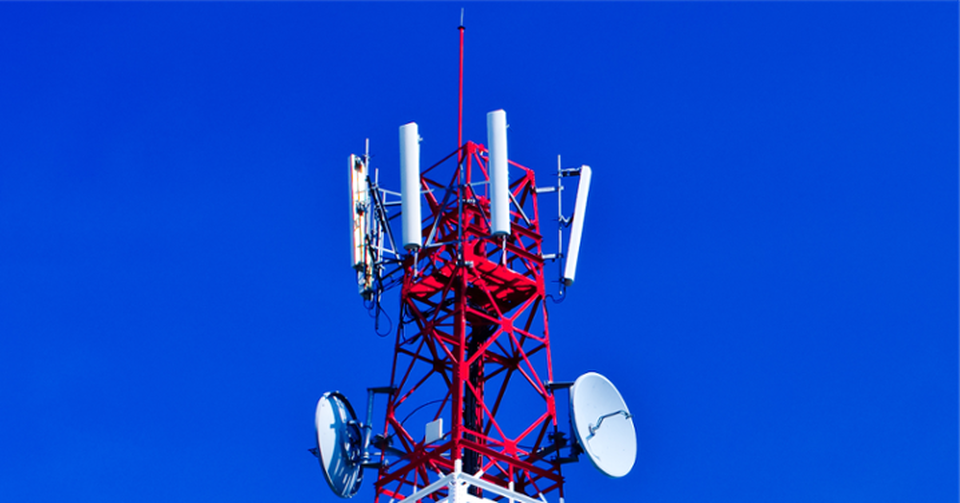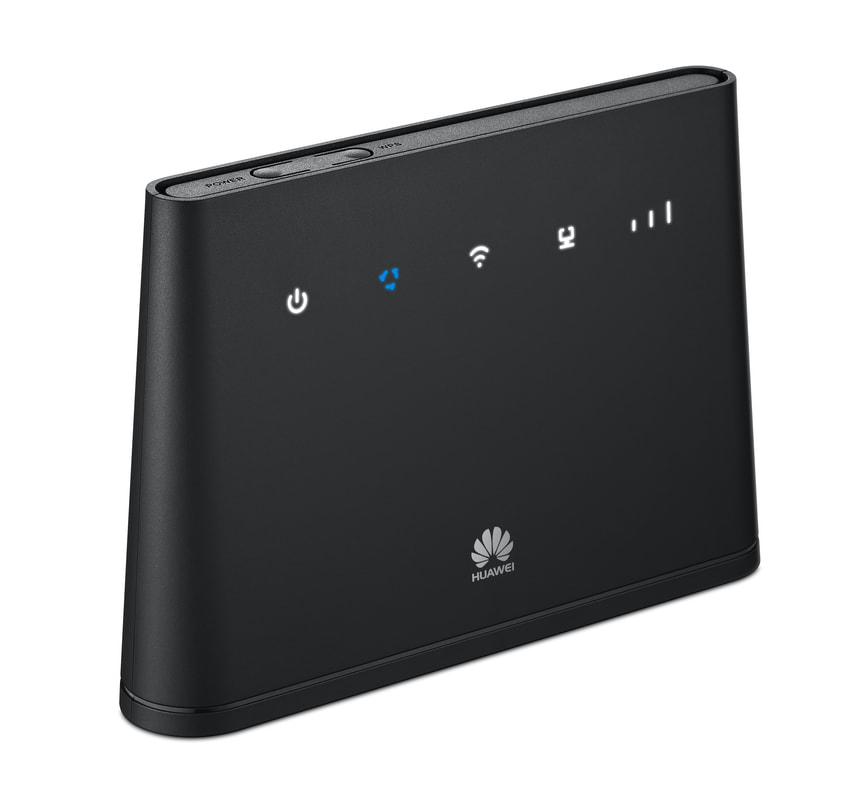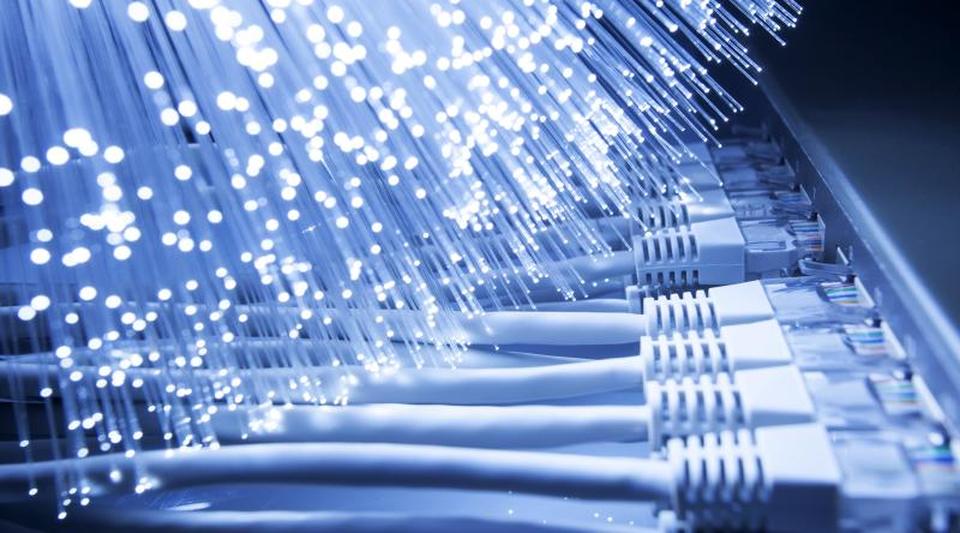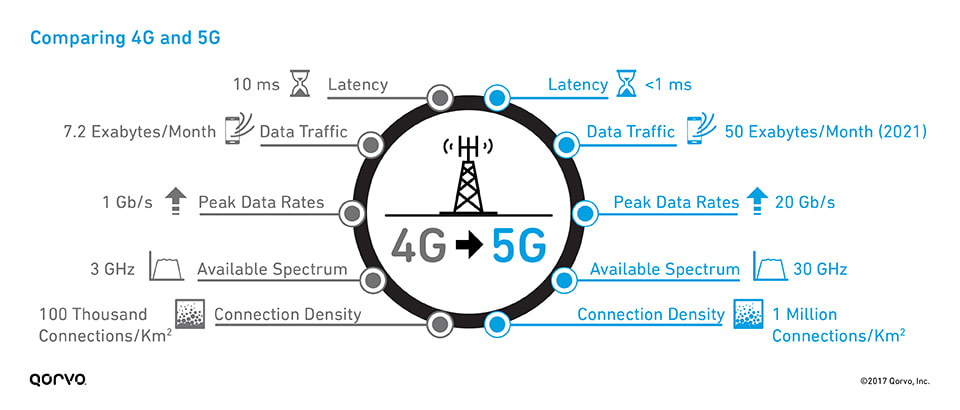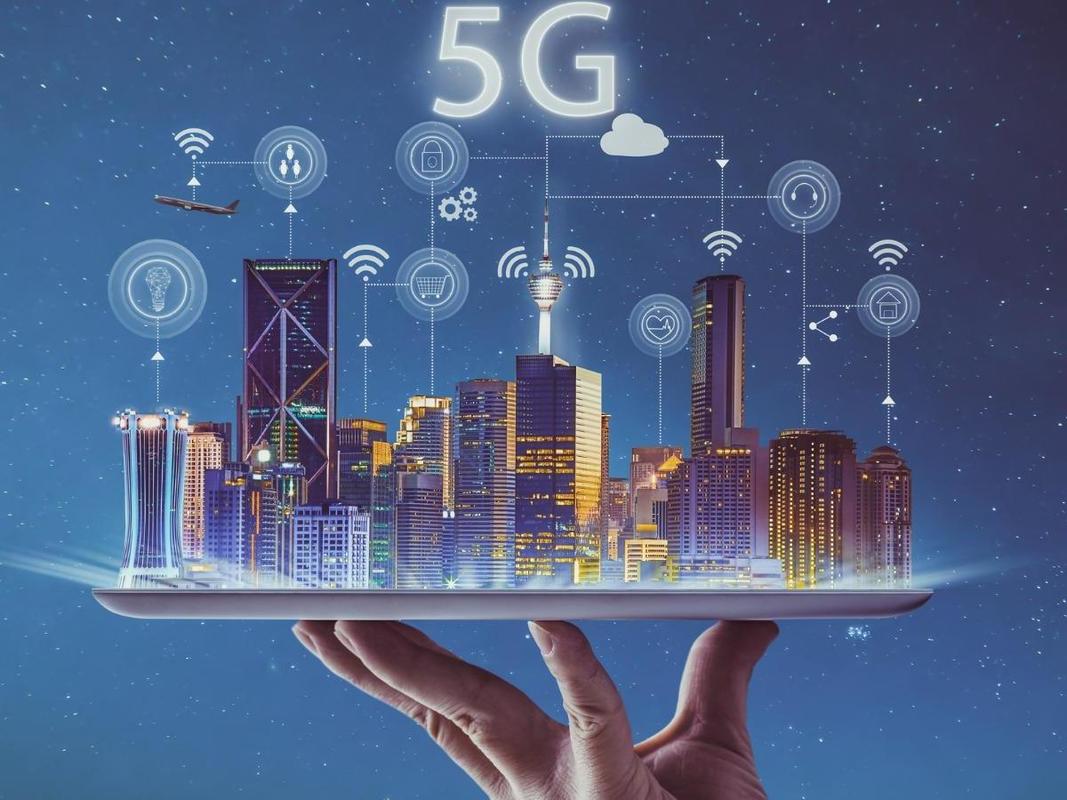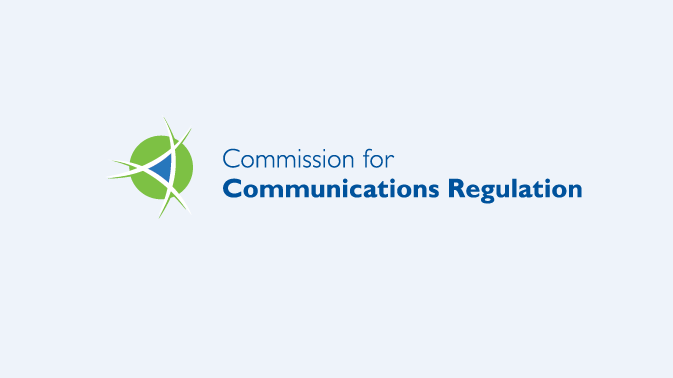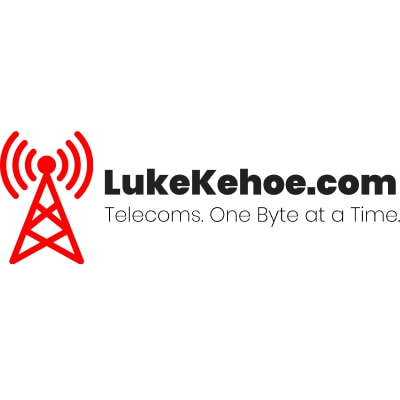Why 5G will Revive Mobile Broadband:
The introduction of 5G will trigger a renaissance in mobile broadband, providing an unparalleled broadband experience using radio spectrum.
Published 07/09/18
Quarter after quarter, ComReg's reports depict a dismal outlook for mobile broadband in Ireland. The number of mobile broadband subscriptions continues to decline, even as our dependence on the Internet continues to grow.
Just to be clear, mobile broadband (or fixed wireless broadband), provides access to the Internet utilising the same radio spectrum for information transmission as our phone's do. A mobile broadband router connects wirelessly to a 3G or 4G mobile network, foregoing the need for a fixed copper or fibre connection to your house.
As the availability of fixed high-speed broadband has expanded, thanks to the deployments made by companies such as eir, SIRO and Virgin Media, the requirement for mobile broadband has reduced. Simply put, a fixed broadband connection is usually faster and more reliable than a wireless connection. This is because mobile broadband is limited by the physics of radio spectrum, which provides significantly less capacity than fibre optic solutions.
However, 5G will revive mobile broadband when it launches in Ireland next year. The technology, which is currently in the final stages of specification, promises to revolutionise the way we experience the Internet. Using mmWave spectrum (ultra-high-frequency radio waves), and other technologies such as Massive MIMO, 5G networks will provide extreme capacity and speeds exceeding 1Gbps. This makes fixed wireless broadband an excellent use case for 5G, providing broadband that can, theoretically, rival fixed speeds (FTTC).
Just to be clear, mobile broadband (or fixed wireless broadband), provides access to the Internet utilising the same radio spectrum for information transmission as our phone's do. A mobile broadband router connects wirelessly to a 3G or 4G mobile network, foregoing the need for a fixed copper or fibre connection to your house.
As the availability of fixed high-speed broadband has expanded, thanks to the deployments made by companies such as eir, SIRO and Virgin Media, the requirement for mobile broadband has reduced. Simply put, a fixed broadband connection is usually faster and more reliable than a wireless connection. This is because mobile broadband is limited by the physics of radio spectrum, which provides significantly less capacity than fibre optic solutions.
However, 5G will revive mobile broadband when it launches in Ireland next year. The technology, which is currently in the final stages of specification, promises to revolutionise the way we experience the Internet. Using mmWave spectrum (ultra-high-frequency radio waves), and other technologies such as Massive MIMO, 5G networks will provide extreme capacity and speeds exceeding 1Gbps. This makes fixed wireless broadband an excellent use case for 5G, providing broadband that can, theoretically, rival fixed speeds (FTTC).
An Insight into the Technology
There are over 500,000 premises in Ireland which have no access to a fast fixed-connection. This puts approximately one million people on the wrong side of the digital divide, they long for a connection that's even half as fast as those we enjoy in urban areas. The National Broadband Plan was created to save these premises in an age where access to the Internet is basically as fundamental as access to electricity or clean water.
However, we are painfully aware of the fact that the National Broadband Plan has yet to commence (a stain on our country's image), so how do these people access the Internet? For many, the answer is mobile broadband. Vodafone's and Three's 3G and 4G networks cover a vast majority of the Irish landmass. The average 4G download speed in Ireland exceeds 17Mbps, a speed that would be suitable for light to moderately heavy internet users for mobile broadband.
I know a huge number of people who have purchased a 3G/4G capable router, popped in a SIM, and pay for a monthly mobile broadband package from Three or Vodafone (Notice, I am hesitant to mention eir, simply because the company's 4G network is crippled). In the most intriguing case, my friend enjoys speeds consistently exceeding 80Mbps on Vodafone's 4G Advanced network in a rural area. The fixed broadband speed struggles to reach 1Mbps.
Now, before I continue to praise the saving grace that mobile broadband has become for so many people, I need to explain its limitations. Of course, coverage is a massive issue. Regardless of the figures touted by Vodafone or Three, there are still many places which remain untouched by 4G. Three, in particular, has made huge efforts recently to upgrade existing base stations to 4G and also to construct new base stations. Coverage shortcomings aside, capacity is the main issue. For the most part, 4G was not designed for multiple households downloading and uploading data simultaneously. The technology has become subject to congestion and dial-up like speeds in areas where there is a severe lack of capacity.
To make matters worse, our mobile providers generally utilise low-frequency spectrum (800MHz) in rural areas because this spectrum travels significantly further. But, the capacity offered by such spectrum is considerably lower than that deployed in urban areas (1800MHz or 2100MHz). This means rural cell sites will be more susceptible to congestion if there is heavy demand, which is inevitable if there are many independent connections being utilised for broadband. In fact, Three's network (which carries more data traffic than that of Vodafone and eir combined) experiences over 52% of data traffic on rural base stations.
To gain a greater insight into using wireless networks as a method of providing broadband we need to look back to 2008 when Three (before the company merged with O2) was awarded the contract for the National Broadband Scheme. This scheme aimed to connect rural homes and businesses in Ireland that were previously disconnected. Three established a 3G(HSDPA) RAN network in rural areas to deliver broadband. However, it was a huge disaster and a waste of government resources.
The network boasted theoretical maximum speeds of 7.2Mbps. When many different homes were connected to the same cell and trying to access the network simultaneously, things went downhill fast. The network was grossly outdated, especially when it was supposed to be utilised for broadband. Take this as an example, Netflix states that a steady speed of at least 20Mbps is required for just one 4K stream. It is clear that, at least in this instance, the National Broadband Scheme failed because it used a technology that was simply obsolete by the time it rolled out.
However, we are painfully aware of the fact that the National Broadband Plan has yet to commence (a stain on our country's image), so how do these people access the Internet? For many, the answer is mobile broadband. Vodafone's and Three's 3G and 4G networks cover a vast majority of the Irish landmass. The average 4G download speed in Ireland exceeds 17Mbps, a speed that would be suitable for light to moderately heavy internet users for mobile broadband.
I know a huge number of people who have purchased a 3G/4G capable router, popped in a SIM, and pay for a monthly mobile broadband package from Three or Vodafone (Notice, I am hesitant to mention eir, simply because the company's 4G network is crippled). In the most intriguing case, my friend enjoys speeds consistently exceeding 80Mbps on Vodafone's 4G Advanced network in a rural area. The fixed broadband speed struggles to reach 1Mbps.
Now, before I continue to praise the saving grace that mobile broadband has become for so many people, I need to explain its limitations. Of course, coverage is a massive issue. Regardless of the figures touted by Vodafone or Three, there are still many places which remain untouched by 4G. Three, in particular, has made huge efforts recently to upgrade existing base stations to 4G and also to construct new base stations. Coverage shortcomings aside, capacity is the main issue. For the most part, 4G was not designed for multiple households downloading and uploading data simultaneously. The technology has become subject to congestion and dial-up like speeds in areas where there is a severe lack of capacity.
To make matters worse, our mobile providers generally utilise low-frequency spectrum (800MHz) in rural areas because this spectrum travels significantly further. But, the capacity offered by such spectrum is considerably lower than that deployed in urban areas (1800MHz or 2100MHz). This means rural cell sites will be more susceptible to congestion if there is heavy demand, which is inevitable if there are many independent connections being utilised for broadband. In fact, Three's network (which carries more data traffic than that of Vodafone and eir combined) experiences over 52% of data traffic on rural base stations.
To gain a greater insight into using wireless networks as a method of providing broadband we need to look back to 2008 when Three (before the company merged with O2) was awarded the contract for the National Broadband Scheme. This scheme aimed to connect rural homes and businesses in Ireland that were previously disconnected. Three established a 3G(HSDPA) RAN network in rural areas to deliver broadband. However, it was a huge disaster and a waste of government resources.
The network boasted theoretical maximum speeds of 7.2Mbps. When many different homes were connected to the same cell and trying to access the network simultaneously, things went downhill fast. The network was grossly outdated, especially when it was supposed to be utilised for broadband. Take this as an example, Netflix states that a steady speed of at least 20Mbps is required for just one 4K stream. It is clear that, at least in this instance, the National Broadband Scheme failed because it used a technology that was simply obsolete by the time it rolled out.
Causes of the Decline
The above reasons and the expansion of fixed fibre solutions mean that mobile broadband has become redundant for many. Hence, subscriptions to the service have continued to fall beyond repair. eir's (controversial) roll out of 100% fibre optic broadband (FTTH) to over 300,000 premises in Ireland is sure to create shockwaves in the mobile broadband market and contribute to its decline.
Furthermore, with the commencement of the National Broadband Plan supposedly months away (emphasis on supposedly), the need for mobile broadband will diminish. 4G is not the answer to our broadband needs in the short or long term, and I think that people are finally beginning to realise that.
Besides the technical limitations of using 4G for broadband, there is the price and plans that are available for such a service. Three, no surprise, is the only Irish mobile network which provides an unlimited mobile broadband plan. Compare that to fixed broadband, and I can't think of a provider that imposes a hard limit (yes, there are still fair usage policies and "traffic management"). This puts those with a mobile broadband plan, which are now similarly priced to plans providing FTTC broadband, at a serious disadvantage. Regardless of how fast their connection is, those with mobile broadband will need to tread carefully to avoid incurring heart attack-inducing overage charges.
Furthermore, with the commencement of the National Broadband Plan supposedly months away (emphasis on supposedly), the need for mobile broadband will diminish. 4G is not the answer to our broadband needs in the short or long term, and I think that people are finally beginning to realise that.
Besides the technical limitations of using 4G for broadband, there is the price and plans that are available for such a service. Three, no surprise, is the only Irish mobile network which provides an unlimited mobile broadband plan. Compare that to fixed broadband, and I can't think of a provider that imposes a hard limit (yes, there are still fair usage policies and "traffic management"). This puts those with a mobile broadband plan, which are now similarly priced to plans providing FTTC broadband, at a serious disadvantage. Regardless of how fast their connection is, those with mobile broadband will need to tread carefully to avoid incurring heart attack-inducing overage charges.
Why 5G will transform Mobile Broadband
5G will solve most of the issues that we experience with 4G networks today. Extreme capacity will mitigate congestion issues, leading to speeds which are much more consistent and faster (thanks to Massive MIMO, Beamforming, mmWave spectrum, etc.). These improvements are desperately required for fixed wireless broadband, a use case for mobile networks which is very demanding.
Dozens of households will be able to connect simultaneously to a 5G cell and take advantage of blistering speeds and unparalleled response times . In a sense, 5G brings mobile broadband closer to fibre broadband. Don't get me wrong, it is certainly not a complete replacement, but we should be able to do pretty much everything with 5G broadband as we would with a fixed connection. Just saying that is really exciting, and a massive breakthrough in terms of wireless technology.
For a more detailed explanation of what 5G actually is and how it works, check this article. In summary, as 5G uses high-frequency spectrum (ComReg has already allocated 3.6GHz and 26GHz bands), the signals will not propagate as well as 4G signals do. This means that there will be a need for a 5G base station on every street if we are to achieve ubiquitous coverage. This will make the rollout of the technology very challenging and expensive for our mobile networks. There will be vast rural areas which will remain untouched by 5G for years, and this is a major disadvantage, especially considering people living in rural areas are the primary users of mobile broadband. For this reason, many would argue that 5G may not revive mobile broadband for quite a while.
Finally, as we move from 4G to 5G connections, today's 4G networks will become faster thanks to the demand shifting to the newer networks. For those using 4G when 5G becomes widely available, the experience will improve drastically, as it did with 3G when 4G launched. This will make existing 4G networks a more attractive option for broadband.
Dozens of households will be able to connect simultaneously to a 5G cell and take advantage of blistering speeds and unparalleled response times . In a sense, 5G brings mobile broadband closer to fibre broadband. Don't get me wrong, it is certainly not a complete replacement, but we should be able to do pretty much everything with 5G broadband as we would with a fixed connection. Just saying that is really exciting, and a massive breakthrough in terms of wireless technology.
For a more detailed explanation of what 5G actually is and how it works, check this article. In summary, as 5G uses high-frequency spectrum (ComReg has already allocated 3.6GHz and 26GHz bands), the signals will not propagate as well as 4G signals do. This means that there will be a need for a 5G base station on every street if we are to achieve ubiquitous coverage. This will make the rollout of the technology very challenging and expensive for our mobile networks. There will be vast rural areas which will remain untouched by 5G for years, and this is a major disadvantage, especially considering people living in rural areas are the primary users of mobile broadband. For this reason, many would argue that 5G may not revive mobile broadband for quite a while.
Finally, as we move from 4G to 5G connections, today's 4G networks will become faster thanks to the demand shifting to the newer networks. For those using 4G when 5G becomes widely available, the experience will improve drastically, as it did with 3G when 4G launched. This will make existing 4G networks a more attractive option for broadband.
Conclusion: A Renaissance awaits Mobile Broadband
Whatever the result of the introduction of 5G, we can be sure that mobile broadband solutions will benefit hugely from its existence, providing fibre-like speeds and reliability to more houses than ever before. You will be pleased to learn that the days of congested 4G networks are becoming numbered, thanks in part to the implementation of techniques such as MIMO and 256 QAM.
Mobile broadband was and is never designed to be a replacement for a fixed connection. But, for the people that await the arrival of the National Broadband Plan, mobile broadband appears to be one of the best options there is. Believe me, when I say this, the arrival of 5G will spur a renaissance in mobile broadband. The extreme capacity that 5G will offer is a key reason for this, quality broadband will be provided even at the peak hours of usage.
The decline of 4G broadband today is a consequence of several trends, such as a dip in 4G speeds due to congestion, the expansion of fixed connections and data allowances which are too small. The latter issue should disappear when 5G becomes more widespread, as imposing hard usage caps will become futile, a major boon for us consumers.
To boil all of this down into a single paragraph for you: the decline that mobile broadband is experiencing will dissipate with the introduction of 5G networks that are designed for more demanding use cases. Consumers will be enticed to 5G mobile broadband offerings by excellent speeds, large and probably unlimited allowances, and superior coverage (thanks to the evolution of our mobile networks). All of these improvements will serve to alleviate the pain suffered by so many Irish people today, a pain arising from a lack of reliable broadband.
Mobile broadband was and is never designed to be a replacement for a fixed connection. But, for the people that await the arrival of the National Broadband Plan, mobile broadband appears to be one of the best options there is. Believe me, when I say this, the arrival of 5G will spur a renaissance in mobile broadband. The extreme capacity that 5G will offer is a key reason for this, quality broadband will be provided even at the peak hours of usage.
The decline of 4G broadband today is a consequence of several trends, such as a dip in 4G speeds due to congestion, the expansion of fixed connections and data allowances which are too small. The latter issue should disappear when 5G becomes more widespread, as imposing hard usage caps will become futile, a major boon for us consumers.
To boil all of this down into a single paragraph for you: the decline that mobile broadband is experiencing will dissipate with the introduction of 5G networks that are designed for more demanding use cases. Consumers will be enticed to 5G mobile broadband offerings by excellent speeds, large and probably unlimited allowances, and superior coverage (thanks to the evolution of our mobile networks). All of these improvements will serve to alleviate the pain suffered by so many Irish people today, a pain arising from a lack of reliable broadband.
